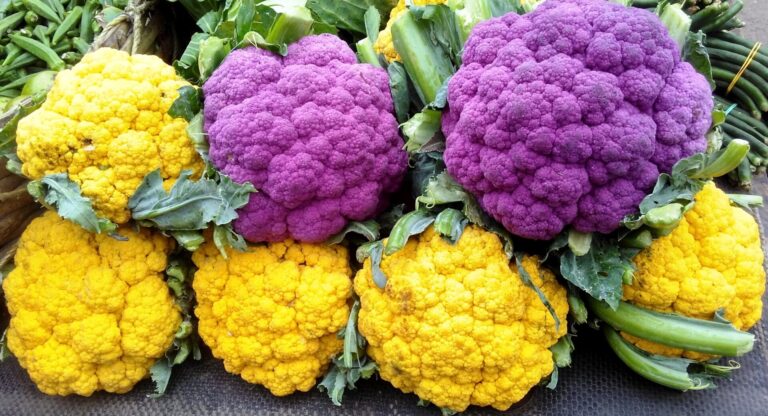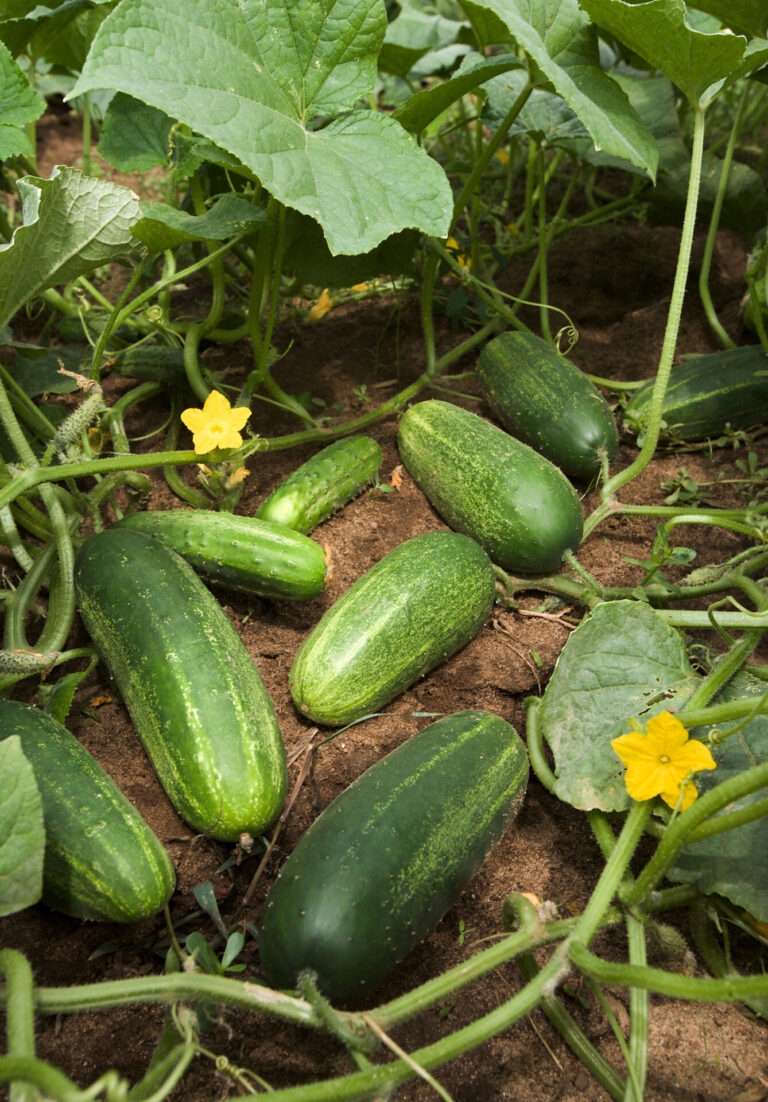
Cauliflower
Cauliflower resembles broccoli, in that it is the immature flower stalk of the plant that is eaten, but it isusually white. There are varieties of cauliflower with colors from purple to pale green and varying flavors. Most cauliflower grows to about 14 inches in height. As a member of the brassica family so it has similar needs to broccoli and cabbage, but it is muchmore temperamental; it is less frost hardy, more likely to bolt and most likely to be attacked by insects.This is why it tends to be expensive in the supermarket. It is more work to grow



















